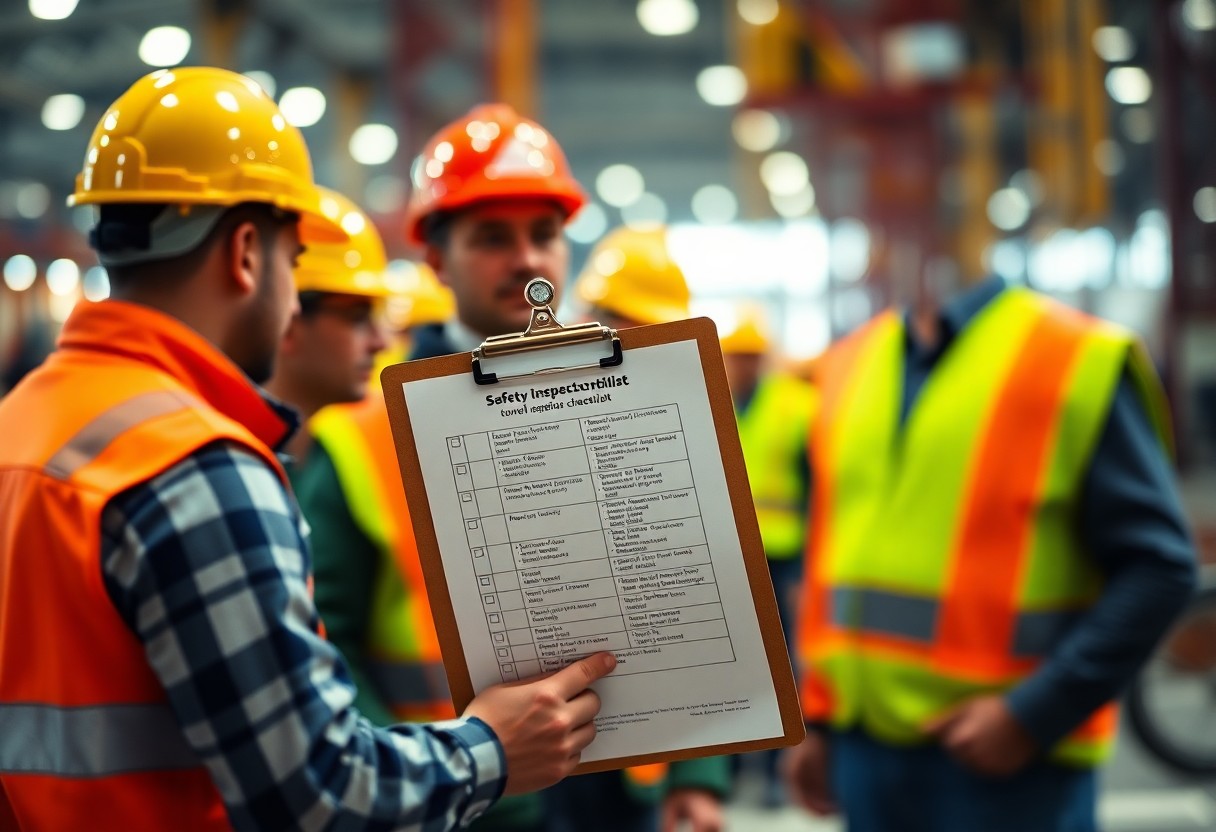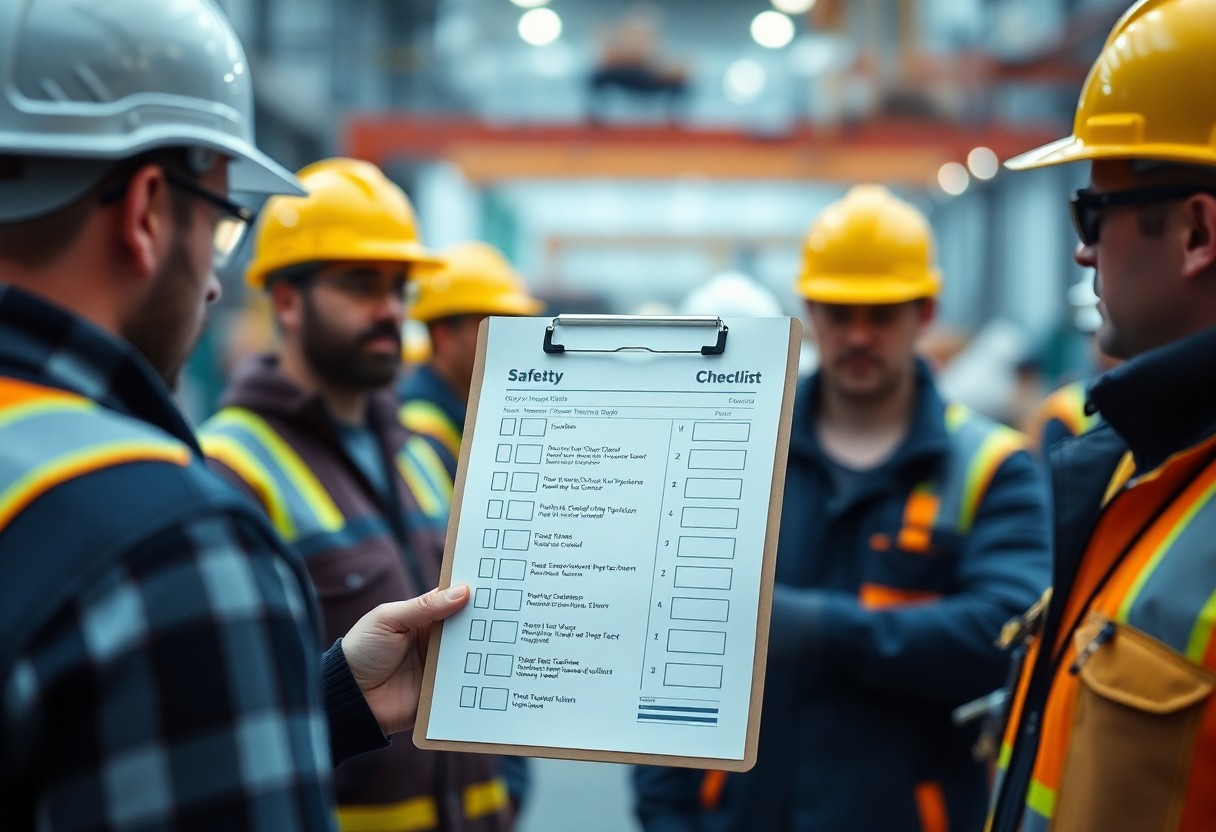Urgently, you must recognize that workplace safety is not something to postpone. Every day, your job can expose you to unforeseen hazards that could lead to serious injuries or even fatalities. With alarming statistics revealing the high rate of work-related accidents, prioritizing safety is necessary for protecting not just yourself but also your colleagues. You have the power to foster a safer environment, which in turn boosts productivity and morale. Don’t let complacency jeopardize your well-being – take action now to ensure a secure workplace.
Key Takeaways:
- Workplace safety should be prioritized consistently; neglecting it can lead to severe consequences for employees and the organization.
- Implementing proactive safety measures not only protects workers but also improves overall productivity and employee morale.
- Regular training and awareness programs can significantly lower the risk of accidents and create a culture of safety within the workplace.
The Importance of Immediate Safety Measures
A proactive approach to workplace safety ensures that potential hazards are addressed before they manifest into serious incidents. By implementing immediate safety measures, you protect not only your employees but also your organization’s reputation and productivity. Every second counts when it comes to managing risks, and taking action now can prevent devastating outcomes later on.
Understanding Workplace Hazards
Beside minimizing risks, recognizing and understanding workplace hazards is imperative for creating a safe environment. Hazards can range from physical dangers, such as slips and trips, to ergonomic issues caused by poor workstation setups. By identifying these hazards, you can implement strategies tailored to mitigate them effectively.
Legal Implications of Neglecting Safety
One of the most pressing concerns with neglecting workplace safety is the potential legal repercussions. Failing to comply with safety regulations can lead to hefty fines, lawsuits, and damage to your company’s credibility. This makes it vital to prioritize safety protocols to avoid legal ramifications that could jeopardize your organization.
Consequently, neglecting safety not only puts your employees at risk but also exposes you to significant financial penalties and legal liabilities. If an incident occurs due to your inaction, you could face lawsuits that result in costly settlements, loss of business, or even criminal charges in severe cases. Establishing and maintaining a rigorous safety protocol can safeguard your organization from these dire outcomes, creating a healthier work environment while protecting your bottom line.
The Financial Impact of Unsafe Work Environments
Clearly, ignoring workplace safety can lead to significant financial repercussions for your organization. An unsafe work environment can result in increased insurance premiums, legal fees, and potential regulatory fines. Moreover, the cost of occupational injuries and illnesses can skyrocket, impacting your bottom line and hindering your overall profitability.
Cost of Accidents to Businesses
Before delving into the intricacies, you should realize that workplace accidents come with a hefty price tag. These incidents not only incur direct costs, such as medical expenses and compensation claims, but also indirect expenses like training replacements and lost productivity. The financial strain can divert resources intended for growth and development within your business.
Long-Term Effects on Workforce Productivity
Financial challenges continue to escalate if workplace safety issues persist, leading to diminished productivity. Long-term injuries can force you to deal with a reduced workforce and lower morale, causing your employees to feel less secure and engaged. This drop in productivity far outweighs any short-term savings you might gain by neglecting safety measures.
To maintain a high-performance work environment, you have to prioritize safety. A lack of safety can result in frequent disruptions to your operations as your team deals with accidents, leading to negative impacts on efficiency and team dynamics. In turn, this creates an environment where employees are less likely to collaborate and innovate, ultimately stunting growth and progress. Investing in a safe workplace is not just an expense; it is a vital component of cultivating a productive and thriving workforce that drives your business forward.
Common Misconceptions About Workplace Safety
All too often, workplace safety is underestimated, leading to a false sense of security. Many believe that accidents are rare events that don’t apply to their environment. This misunderstanding can have serious consequences, as neglecting safety measures can result in injuries, legal issues, and loss of productivity. It’s vital to challenge these misconceptions and recognize that every workplace requires vigilance and proactive safety strategies.
“It Won’t Happen Here” Mentality
About the prevalent belief that “it won’t happen here” fosters complacency among employees and management. This mentality leads to a dangerous environment where potential hazards are ignored. You must understand that accidents can happen anywhere, and taking preventive measures is vital to ensure a safe workplace for everyone.
The Overconfidence of Employees and Management
At times, both employees and management can display an overconfidence that clouds their judgment regarding safety practices. It’s easy to assume that because no incidents have occurred in the past, they’re unlikely to happen in the future. However, this mindset can be detrimental. In addition, it may cause you to overlook vital safety protocols and training opportunities. Your confidence should empower you to be aware of potential hazards and actively engage in fostering a culture of safety within your organization. Acknowledging risks can significantly reduce the likelihood of accidents and enhance workplace morale.

Developing a Proactive Safety Culture
Despite the tendency to prioritize productivity over safety, cultivating a proactive safety culture is important. This approach involves embedding safety as a core value within your organization, ensuring that all employees feel responsible for maintaining a safe environment. You can achieve this through ongoing communication, visible leadership commitment, and integrating safety into daily operations. By doing so, not only will your workforce feel more empowered, but the overall safety performance of your organization will also improve significantly.
Training and Education Programs
Behind every successful safety culture lies comprehensive training and education programs that equip your employees with the knowledge and skills necessary to identify and mitigate dangers in the workplace. Regularly scheduled training sessions ensure that everyone understands safety protocols, your legal responsibilities, and best practices. Engaging employees in ongoing education creates a skilled workforce that is not only aware of safety risks but also competent in their management.
Encouraging Employee Participation
Across your organization, fostering employee participation in safety initiatives can lead to significant improvements in workplace safety. When employees are actively involved in safety discussions and decision-making, they are more likely to identify potential hazards and recommend practical solutions. This involvement not only enhances your team’s commitment to safety but also creates a sense of empowerment. Encouraging open communication channels where employees can report unsafe conditions or suggest improvements will also cultivate a culture where safety is prioritized. It is important to recognize and reward employee contributions to safety, as this further motivates your workforce to take ownership of their work environment.
And by actively seeking input from your staff, you can harness their frontline experiences to identify and address real-world safety concerns. Make sure to implement feedback mechanisms, such as safety committees or suggestion boxes, where employees can comfortably share their insights. Acknowledging their contributions not only enhances your safety procedures but also fosters a collaborative environment. Ultimately, when employees feel valued and heard in safety matters, they are likely to engage more in maintaining a safer workplace, which ultimately reduces accidents and risks.
Implementing Effective Safety Protocols
Now is the time to establish a robust framework for safety protocols that protects your employees and your business. Implementing effective safety measures involves clearly defined policies, ongoing training, and a commitment from management to prioritize safety at every level. Engaging your workforce in this process not only fosters a safe work environment, but also enhances morale and productivity, as employees feel valued and secure.
Risk Assessment and Management
With a comprehensive risk assessment, you can identify potential hazards unique to your workplace. By evaluating these risks thoroughly, you can develop targeted strategies and safety measures to minimize the likelihood of accidents, ensuring a safer environment for all employees.
Regular Safety Audits and Inspections
For maintaining high safety standards, conducting regular safety audits and inspections is crucial. These evaluations help you spot existing hazards, verify compliance with safety regulations, and assess the effectiveness of your current protocols.
To enhance your workplace safety, conducting frequent safety audits and inspections is vital. These evaluations empower you to identify critical hazards before they escalate into serious accidents. Additionally, they enable your team to pinpoint compliance gaps and areas where safety protocols can be strengthened. Implementing feedback from these audits not only bolsters safety measures but also fosters a culture of accountability and vigilance among employees, ultimately leading to a safer workplace for everyone.
Case Studies: Consequences of Delayed Action
For every workplace safety negligence, there are dire consequences that can reshape your perspective on the importance of immediate action. Consider these alarming case studies:
- Cal/OSHA 2019 Report: 46% of workplace accidents resulted from poor safety protocols.
- Bureau of Labor Statistics: 2.8 million non-fatal workplace injuries occur yearly, costing over $100 billion in wages and productivity.
- OSHA Statistics: Companies with delayed safety measures see a 30% higher incident rate than those that prioritize safety.
Discover more about safety protocols in the M02: Simulation on International Ethics Flashcards.
Real-Life Examples of Workplace Accidents
Between 2000 and 2019, several high-profile workplace accidents underline the impact of deferred safety measures, ranging from fatal machinery malfunctions to severe chemical exposure incidents. Each event shocked communities, emphasizing the risks taken when safety protocols are inadequately addressed.
Lessons Learned from These Incidents
An effective safety strategy can drastically reduce workplace incidents. Companies failing to act on safety evaluations often face penalties and damage to their reputation, revealing lessons about proactivity versus neglect.
Understanding how these accidents unfold is vital. Implementing standard operating procedures, providing comprehensive training, and fostering a culture of safety awareness not only mitigates risks but enhances employee morale. Emphasizing preventive measures leads to fewer accidents, improved productivity, and a clearer path towards compliance with regulations, ensuring that both your team and your business thrive.
Final Words
On the whole, your approach to workplace safety should never be taken lightly or postponed. By understanding the severe consequences of neglecting safety protocols—from personal injury to financial loss—you can instill a culture of safety that protects not only you but also your colleagues. Taking proactive measures, such as regular training and safety audits, helps prevent accidents before they occur. Keep in mind that a safe workplace fosters productivity, morale, and trust among your team, ultimately driving your organization’s success. Prioritize safety today, and you will create a safer, more resilient work environment for everyone.
Q: Why is workplace safety considered a priority for businesses?
A: Prioritizing workplace safety is crucial not only to protect employees but also to enhance overall productivity and morale. When workers feel safe, they are more likely to be engaged, leading to better performance and reduced absenteeism. Additionally, fostering a safe environment helps businesses avoid potential legal issues and financial repercussions that arise from workplace accidents or injuries.
Q: What are some common misconceptions about workplace safety?
A: A frequent misconception is that workplace safety is solely the responsibility of management. In reality, it is a shared responsibility among all employees. Another misconception is that safety protocols only apply to high-risk jobs; however, incidents can occur in any setting, making it crucial for all workplaces to implement and maintain safety measures. Lastly, some believe that enforcing safety measures slows down productivity, yet many studies show that effective safety training and practices can actually streamline operations.
Q: How can employees contribute to a safer workplace?
A: Employees play a significant role in fostering a safe work environment by actively participating in safety training sessions and adhering to established protocols. They should also report any hazards or unsafe conditions to management immediately. Furthermore, employees can engage in open communication with colleagues about safety practices and promote a culture of safety by leading by example. Encouraging teamwork in creating safety initiatives can also build a stronger commitment to workplace safety among all staff members.

Leave a Reply